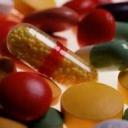When antibiotics works against us. • Shortlink
Since the accidental discovery of Penicillin, in 1928, antibiotics had always been the primary means to defeat bacterical deseases. Their abundant usage may be very dangerous, not only beacuse the well-known drug-resistance phenomena: whether taken for long periods, antibiotics can trigger dysfunctions in the mitocondria, and induce normal animal cells to oxidative stress, by quicken the cellular aging.
This conseguence was explained, denoting the ways to avoid it, by a study published in Science Traslational Medicine. As the scientists of Howard Hughes Medical Institute ( Boston) claim, the use of antibiotics for long periods can cause the production of Reactive Oxygen Species ( ROS), which destroy bacterical DNA, taking on the function of antibiotics. But, in which way do antibiotics induce the ROS production on animal cells?
To understand this, scientists led by Sameer Kalghati have tested three types of bactericidal antibiotics ( quinolones, beta-lactam and aminoglycosides) on cutured human cells, by confirming that these, in fact, induce the ROS production by arresting the electron transport chain in mitocondria (key process in cellular respiration).
Resulting oxidative stress has, therefore, damaged DNA, proteins and membrane lipids. The damage from ROS, however, can be controlled through treatments with antioxdant N-acetylcyteine, without influence normal antibiotic job. In the end, biologists suggest, it should be prefered the usage of bacteriostatic antibiotics ( which limit or inhibit bacterical growth, without kill them) such as tetracycline, which do not induce oxidative stress in cells.
latest Nike releaseNike Air Jordan Retro 1 Red Black White - Buy Air Jordan 1 Retro (white / black / varsity red), Price: $60.85 - Air Jordan Shoes, Sportaccord
